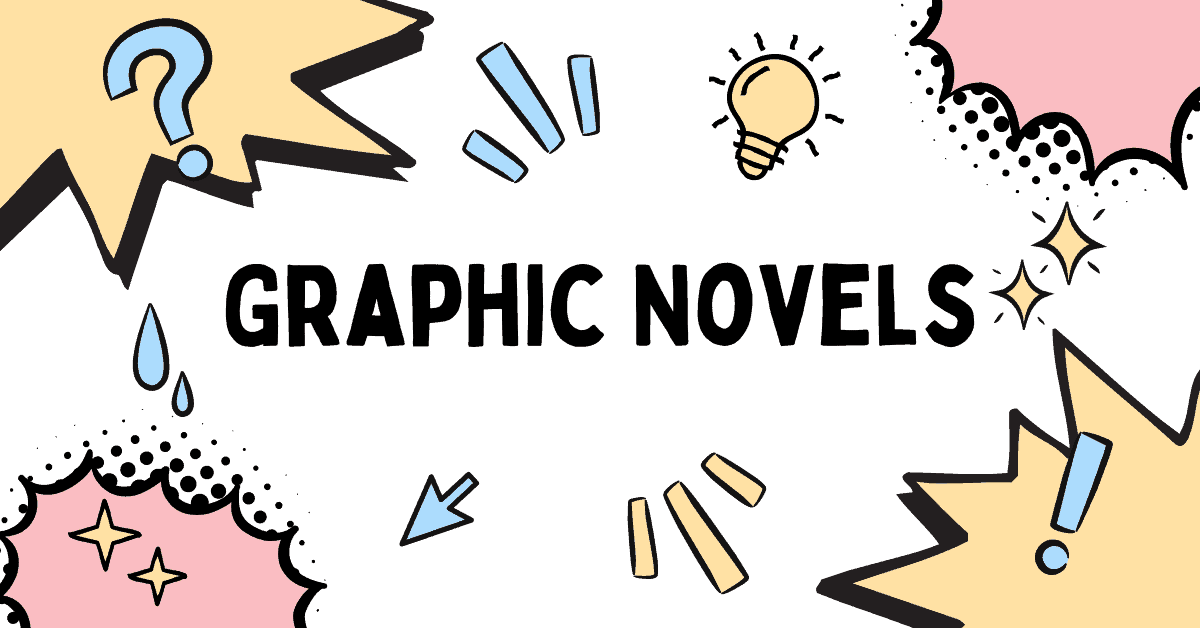Course Description
The syllabus is coming soon. Class is limited to 15 students.
This is a year-long course, however students may join in the second semester as we explore a unit on superheroes and a unit on the theme of immigration in graphic novels.
By bringing together words and pictures, comics and graphic novels merge art and storytelling to create an accessible, compelling medium. In this course, we’ll consider sequential art as a form of literature. We’ll look at the history and roots of comics. We’ll consider how to interpret graphic novel stories and how the visual element impacts storytelling. Along the way, we’ll focus on all the core skills of literary analysis.
We’ll begin our study with the classic graphic novel about graphic novels, Understanding Comics by Scott McCloud. From there, students will read a wide variety of different types of graphic novels, including memoirs, nonfiction reporting, fantasy stories, and superhero comics. Shorter works, as well as full-length graphic novels, will be considered. We’ll also read authors from several countries.
Discussion is a cornerstone of the course and a core part of the course assessment. As a core English course, writing is also an important part of the course. Writing focuses on developing student voice and clarity of communication. Assignments include thesis-based literary analysis, personal narrative, and creative writing.
Course Structure
This course will alternate between longer, full length graphic novels and shorter reading assignments. While the course doesn’t have specific units, first semester, we’ll start by focusing on the visual language of graphic novels and visual communication more generally. We’ll move to the history of graphic novels as well as the growing emphasis on memoir and nonfiction in graphic novels today. Along the way, we’ll explore relatable stories, fantasy elements as metaphor, and graphic novels as a way to convey serious journalism and personal stories, including by reading the seminal two volume story Maus by Art Spiegelman.
Second semester, we’ll explore two very different worlds. First, we’ll look at superheroes, including Spiderman, the Avengers, and Superman. Next, we’ll turn our attention to stories that center immigration as a theme, first by using Ms. Marvel and Superman as stories that bridge the gap between those themes, and then by considering several memoirs and stories centered on themes of immigration.
Each semester will have two projects, one of which is an essay with revision. Students will complete a presentation and a graphic-based story of their own (no art skills required!). Shorter practice with writing will also be expected, but the emphasis is on in class discussion.
Who should enroll?
Students in grades 10-12 who would like an alternative core English course or an English elective. At heart, it’s a course for students who like comics and graphic novels or students who would like to expand their reading to include graphic novels.
Please note! I welcome students who struggle with reading and would appreciate an alternative English course as a result. I also welcome lovers of literature who want a different type of English class or an elective. The volume of reading for this course is steady. Students will read more than a dozen graphic novels during the course. Students are asked to participate in discussions without exception (via chat or microphone are both acceptable). Writing assignments are core to the course but not the primary focus, which is why discussion is a required element of the course.
Prerequisite
This is a high school course for students grade 10 and up. All students should understand the basics of how to write an analytical essay.
Technology Requirements
- High-speed broadband Internet
- Sound card and microphone (for live sessions)
- Streaming video capabilities to watch recorded lectures and films
- Students may be asked to scan or take pictures of certain assignments for submission
Evaluation and Feedback
My goal as an educator is always to help your student move forward in their skills with reading, writing, and critical thinking. Students start in different places. This is why I give extensive feedback on key writing assignments and make myself available to talk students through tricky assignments if they ask for help. The back and forth of the classroom is a big part of how we learn.
Classes are live and interactive. Participation is part of the grade for this course. Assignments are marked and returned in a timely fashion. I respond to student messages promptly and make myself available for students to schedule short help sessions for assignments and try to reach out to students who are struggling with work.
Rubrics are provided for all writing assignments. Grades reflect completion of all work as well as quality. Revision is a focus of the writing in this course and students will be expected to revise all major assignments.
Communication
I communicate with students via Canvas and email. I usually respond quickly to questions and I urge students to reach out any time they need help.








Reviews
There are no reviews yet.